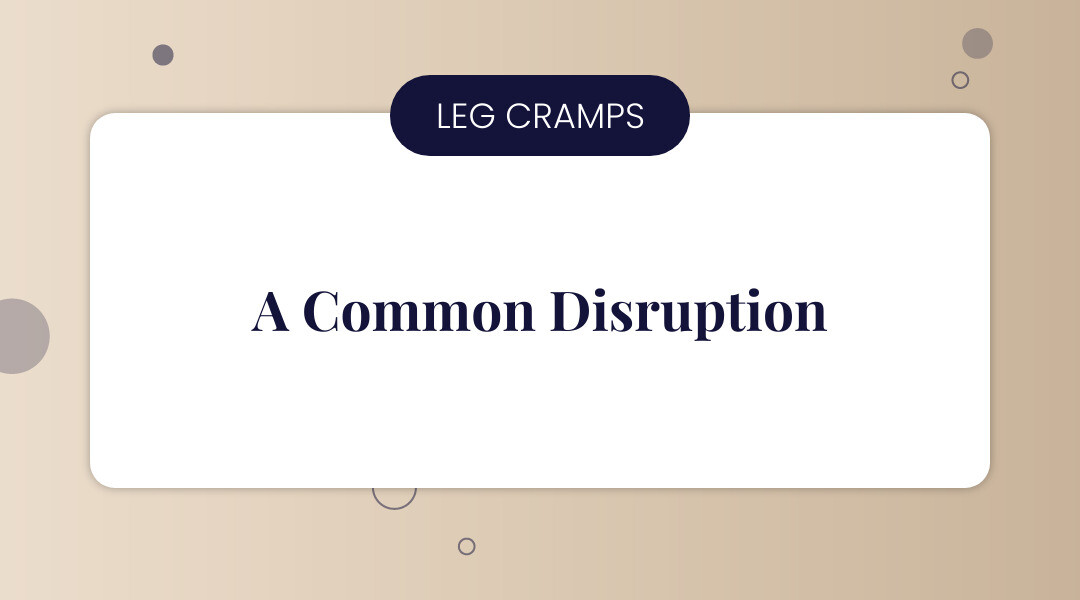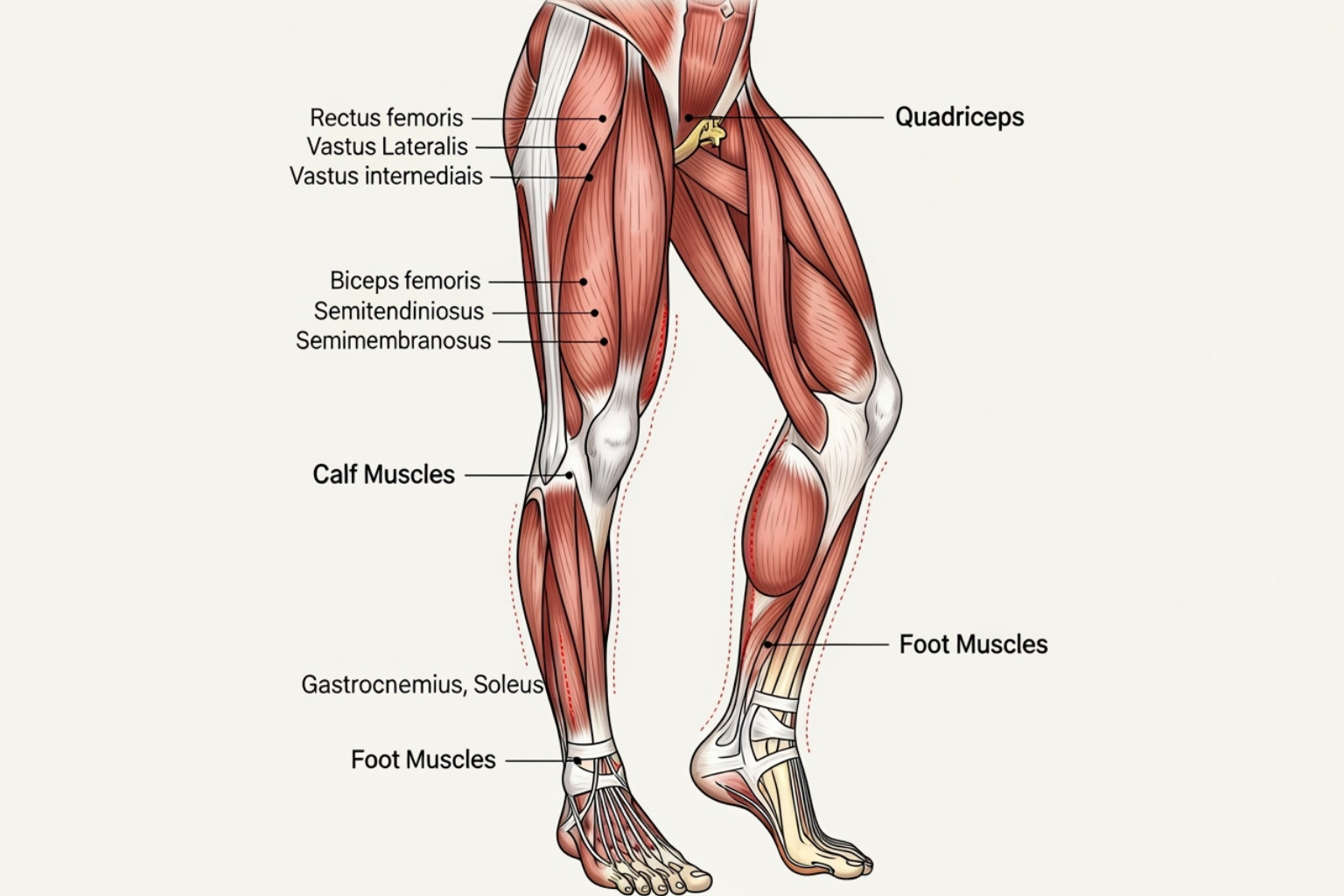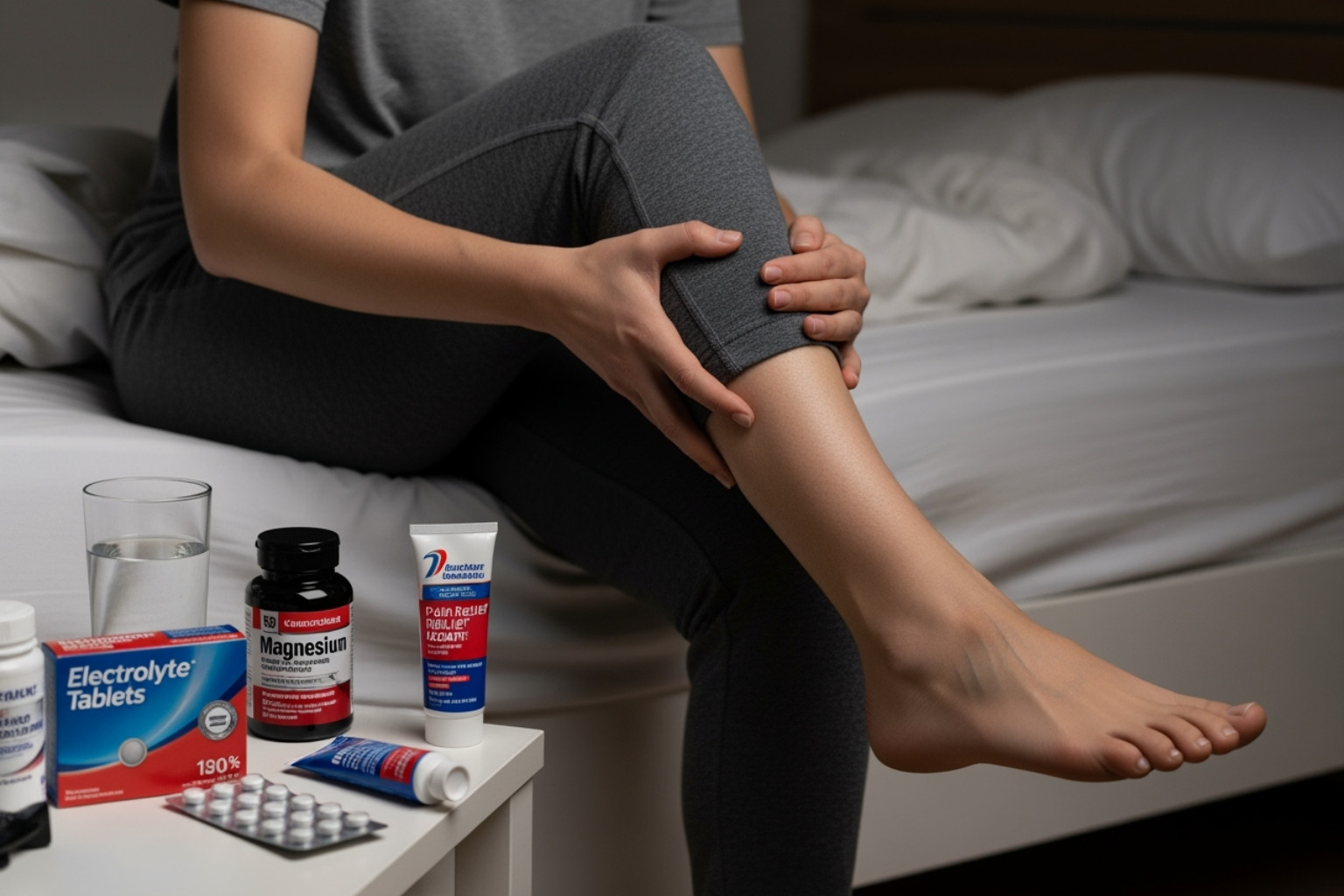Waking Up to Pain? Your Ultimate Guide to Leg Cramp Relief
Leg cramps otc treatment options range from fast-acting topical creams to oral pain relievers and preventative supplements. For immediate relief, topical solutions with ingredients like menthol or magnesium target cramping muscles directly. Oral options include NSAIDs for post-cramp soreness, while supplements like magnesium and potassium focus on long-term prevention.
Quick Comparison of OTC Treatments:
| Treatment Type | Best For | Speed of Relief |
|---|---|---|
| Topical Creams/Roll-ons | Immediate, localized relief | Very fast (minutes) |
| Oral Pain Relievers | Post-cramp soreness | Moderate (20-30 min) |
| Magnesium Supplements | Long-term prevention | Gradual (weeks) |
| Homeopathic Tablets | Acute cramp episodes | Fast (under 30 min) |
If you've ever been jolted awake by a "charley horse," you're not alone. Up to 60% of adults experience night leg cramps, which account for about 3 out of 4 reported cases. These involuntary muscle spasms can last for minutes, leaving lingering soreness.
The good news is that a wide range of over-the-counter (OTC) treatments can manage and even prevent these painful episodes. Common culprits include dehydration, overexertion, mineral deficiencies, and prolonged sitting. While generally harmless, leg cramps can disrupt sleep and diminish your quality of life.
I'm Tony Enrico from Neuropasil. I've helped countless individuals find effective solutions for muscle and nerve pain. This guide will walk you through the best leg cramps otc treatment options to help you find fast, effective relief.

Similar topics to leg cramps otc treatment:
- cream for pulled muscles
- muscle pain cream
- pain reliever muscle
Understanding Leg Cramps: Common Causes and Symptoms
A leg cramp is a sudden, involuntary muscle contraction that can be painful. The affected muscle feels rock-hard, and the cramp itself can last from seconds to minutes, often leaving behind soreness for hours. While many cramps are "idiopathic" (without a clear cause), several common culprits can be identified and addressed.
Common Causes of Leg Cramps:
- Dehydration and Electrolyte Imbalances: Insufficient fluid intake and low levels of key minerals like magnesium, potassium, and calcium are among the most frequent triggers. These electrolytes are vital for proper muscle function, and an imbalance can cause muscles to become irritable and spasm.
- Muscle Overuse or Fatigue: Pushing yourself too hard during exercise or engaging in more physical activity than usual can lead to cramps.
- Prolonged Sitting or Standing: Static positions restrict blood flow to leg muscles, causing fatigue and increasing the risk of cramps.
- Certain Medications: Diuretics, statins, and some other prescription drugs can deplete electrolytes or have muscle cramping as a side effect. If you suspect your medication is the cause, consult your doctor before making any changes.
- Underlying Conditions: In some cases, cramps can be a symptom of inadequate blood supply (like in Peripheral Artery Disease) or other medical issues.
For a comprehensive look at muscle cramps, check out our guide on Muscle Cramps: Causes, Symptoms, and Treatments. The Mayo Clinic also offers valuable insights on what causes night leg cramps.
Types of Leg Cramps
Understanding the type of cramp can help pinpoint the cause and the best leg cramps otc treatment.
- Nocturnal (Night) Leg Cramps: These are the most common, striking during rest or sleep and accounting for about 3 out of 4 reported cases. They are a primary cause of sleep disruption.
- Exercise-Induced Cramps: These occur during or immediately after physical activity, often linked to fatigue and dehydration.
- Cramp Locations: Cramps most famously strike the calf (a "charley horse"), but can also affect the thigh (quadriceps or hamstrings) and the small muscles in the feet and toes.

Paying attention to when and where your cramps occur provides valuable clues for choosing the most effective prevention and treatment strategies. For more on involuntary muscle contractions, read our article on Muscle Spasms.
Your Guide to the Best Leg Cramps OTC Treatment Options
When a leg cramp hits, you want fast relief. Fortunately, the market for leg cramps otc treatment offers a variety of solutions, from immediate topical applications to long-term preventative supplements. The key is choosing the right approach for your needs—whether it's instant relief during an attack or preventing them altogether.
| Treatment Type | Best For | Speed of Relief | Area of Action | Potential Side Effects |
|---|---|---|---|---|
| Topical Creams/Gels | Immediate, localized muscle spasms & soreness | Very fast (minutes) | Localized | Skin irritation, allergic reaction (rare) |
| Oral Pain Relievers | Post-cramp pain, general muscle ache | Moderate (20-30 minutes) | Systemic | Stomach upset, liver/kidney issues (with overuse) |
| Magnesium Supplements | Long-term prevention, nocturnal cramps | Gradual (days to weeks) | Systemic | Diarrhea, nausea (with high doses) |
| Homeopathic Tablets | Acute cramp episodes, nighttime relief | Fast (under 30 minutes) | Systemic | Very low risk, generally well-tolerated |

Topical Solutions: A Targeted Leg Cramps OTC Treatment
For a 2 AM charley horse, topical treatments are ideal. Applied directly to the skin over the cramped muscle, they deliver fast, targeted relief.
- Menthol, Camphor, and Capsaicin: These ingredients create cooling or warming sensations that distract from pain and help muscles relax.
- Arnica: A popular natural ingredient used for generations to reduce muscle soreness, bruising, and swelling.
- Magnesium Cream: This approach delivers magnesium directly through the skin to the affected muscle, potentially offering both immediate relief and preventative benefits without the digestive side effects of oral supplements. Products like Theraworx use magnesium as a key ingredient for fast absorption.
The main advantage of topicals is fast, localized relief with minimal systemic side effects. At Neuropasil, our natural formulations with Aloe, Urea, and Menthol provide soothing comfort for cramps and muscle pain. Learn more in The Complete Guide to Nerve Pain Relief Creams.
Oral Medications: A Popular Leg Cramps OTC Treatment
For the lingering soreness that follows a severe cramp, oral medications can be effective.
- NSAIDs (ibuprofen, naproxen) reduce the inflammation and pain that follow a cramp.
- Acetaminophen (Tylenol) blocks pain signals but doesn't target inflammation.
- Homeopathic tablets, like those from Hyland's, offer quick-dissolving formulas for acute cramps. While scientific evidence is debated, many users report significant relief.
Use oral medications as directed to avoid potential side effects like stomach irritation or liver/kidney issues with long-term overuse. For more on natural options, see our article on Natural Pain Relief Solutions.
Vitamins and Supplements for Leg Cramp Prevention
Preventing cramps is always better than treating them. Supplements can help address underlying nutritional deficiencies.
- Magnesium: The star player for cramp prevention. It's essential for muscle relaxation, and many people find supplementation reduces cramp frequency.
- Potassium: Another critical electrolyte. It's best to get potassium from foods like bananas, avocados, and spinach before turning to supplements.
- Vitamin B Complex & Calcium: These also play supporting roles in nerve and muscle health.
Important: Always consult your doctor before starting any new supplement regimen. They can test for deficiencies and ensure the supplement won't interact with other medications or health conditions. For more on leg pain causes, visit our Leg Pain resource.
Beyond the Bottle: Immediate Relief and Prevention
While leg cramps otc treatment products are valuable, simple home remedies and lifestyle changes are powerful tools for both immediate relief and long-term prevention.
Home Remedies for Instant Cramp Relief
When a cramp strikes, act fast to shorten its duration and intensity.
- Stretch: For a calf cramp, straighten your leg and gently pull your toes toward your face. For a thigh cramp, gently stretch the affected muscle group (quadriceps or hamstrings).
- Massage: Gently rubbing the cramped muscle can improve blood flow and encourage it to relax.
- Apply Heat or Cold: A warm bath, shower, or heating pad can soothe tense muscles. After the initial cramp, a cold pack can help reduce lingering soreness and inflammation.
- Lift: Raising the affected leg can help reduce any swelling and discomfort.
For more tips on managing muscle discomfort, explore our article on What Helps Sore Muscles After Workout.
How to Prevent Leg Cramps with Lifestyle Changes
Preventing a cramp is always the best strategy. These simple adjustments can significantly reduce their frequency.
- Stay Hydrated: This is paramount. Drink plenty of water throughout the day to help your muscles function properly.
- Eat a Balanced Diet: Include foods rich in electrolytes like potassium (bananas, avocados), magnesium (leafy greens, nuts), and calcium (dairy, fortified milks).
- Stretch Regularly: Gentle, daily stretching of your leg muscles, especially before bed, can be highly effective against nocturnal cramps. The Cleveland Clinic offers guidance on how to prevent leg cramps with specific routines.
- Wear Proper Footwear: Supportive shoes are crucial, especially if you're on your feet for long periods.
- Optimize Your Sleeping Position: Avoid pointing your toes downward while sleeping. Keeping blankets loose at the foot of the bed allows for more natural foot movement.
When to See a Doctor for Your Leg Cramps
Most leg cramps are a temporary nuisance, manageable with home remedies or an leg cramps otc treatment. However, sometimes they can signal a deeper health issue that requires a doctor's attention.
You should consult your doctor if your cramps are persistent and frequent, the pain is severe and disrupts your life, or they don't improve with self-care. It's also important to rule out underlying conditions like Restless Legs Syndrome (RLS) or Peripheral Artery Disease (PAD). The Mayo Clinic advises seeing a doctor for frequent or severe night cramps; you can find more details in their guide: When to see a doctor for leg cramps.
Leg Cramps vs. Restless Legs Syndrome (RLS)
It's easy to confuse leg cramps with RLS, but they are different conditions. A leg cramp is a painful, involuntary muscle contraction, while RLS is an uncomfortable, irresistible urge to move the legs.
| Feature | Leg Cramps | Restless Legs Syndrome (RLS) |
|---|---|---|
| Sensation | Sudden, sharp, painful muscle contraction. | Uncomfortable urge to move; crawling, tingling. |
| Pain Level | Often severe. | Generally not painful, but highly irritating. |
| Relief | Stretching or massaging the muscle. | Movement (walking, stretching, wiggling). |
| Onset | Can occur at rest or during activity. | Primarily occurs during rest, especially at night. |
Red Flags That Warrant a Medical Visit
Contact your doctor without delay if your cramps are accompanied by any of these "red flag" symptoms:
- Swelling, redness, or skin changes in the affected area.
- Muscle weakness along with the cramps.
- Cramps that don't improve or worsen despite self-care.
- You suspect cramps are a side effect of a medication (never stop a prescribed drug without medical advice).
Persistent cramps can sometimes be a symptom of more serious conditions like Diabetes, Peripheral Neuropathy, or Spinal Stenosis. Our article on Muscle Pain offers more context. If you have any concerns, it's always best to consult a healthcare professional.
Frequently Asked Questions about Leg Cramp Treatments
Here are answers to some of the most common questions about dealing with leg cramps.
What is the fastest way to get rid of a leg cramp?
The quickest relief comes from immediate action. First, stretch the affected muscle. For a calf cramp, straighten your leg and gently pull your toes toward your shin. Follow this with a gentle massage to improve blood flow and help the muscle relax. Applying heat from a warm compress or shower can also provide soothing, fast relief by relaxing the tense muscle.
Can dehydration cause leg cramps at night?
Yes, absolutely. Dehydration and electrolyte imbalances are major culprits behind nocturnal leg cramps. When your body lacks sufficient fluids and minerals, your muscle cells become more irritable and prone to spasming, especially during periods of rest like sleep. Staying hydrated throughout the day is one of the most effective preventative measures.
What drink helps with leg cramps?
Water is the best choice for general hydration and cramp prevention. If you've been sweating heavily, an electrolyte-replacement drink can help replenish lost minerals like potassium and sodium. Some people also find anecdotal relief from a small amount of pickle juice, possibly due to a nerve reflex triggered by its vinegar and sodium content, but it shouldn't replace regular water intake!
Find Your Footing and Sleep Soundly Again
You now have a clear roadmap for understanding and managing painful leg cramps. From immediate relief to long-term prevention, the right solution often involves a combination of strategies.
Topical treatments offer fast, targeted relief, while oral supplements like magnesium work to prevent future episodes. Simple lifestyle changes like staying hydrated, stretching, and eating a balanced diet form the foundation of effective cramp management.
However, always prioritize your health. If cramps are severe, persistent, or accompanied by other symptoms like swelling or weakness, consult a healthcare provider to rule out underlying issues.
For those seeking targeted, fast-acting relief, consider a natural topical cream like Neuropasil. Our formula uses Aloe, Urea, and Menthol to deliver soothing comfort right where you need it. It's a trusted choice for leg cramps otc treatment, aching feet, and post-workout muscle recovery.
You have the knowledge and tools to take control. For more tips, explore our article on What Are the Best Products for Muscle Pain?. Here's to restful nights and pain-free days.
References
We believe in providing you with well-researched, reliable information to help you steer leg cramp relief. To ensure this guide is as comprehensive and accurate as possible, we've carefully consulted a variety of trusted health organizations, scientific publications, and product resources. Here are the sources that helped us craft this ultimate guide to finding your footing and sleeping soundly again:
-
For insights on nocturnal leg cramps, causes, and when to see a doctor, we consulted the American Academy of Family Physicians and the Mayo Clinic.
-
Our tips on prevention and home treatment are based on resources from the Cleveland Clinic.
-
To understand the evidence behind certain treatments, we reviewed publications from the Cochrane Database of Systematic Reviews and Patient.info.
-
Our general understanding of muscle cramps was informed by resources from Healthwise Staff.
-
For insights into the role of magnesium, we referred to a review on the National Center for Biotechnology Information (NCBI) website.














